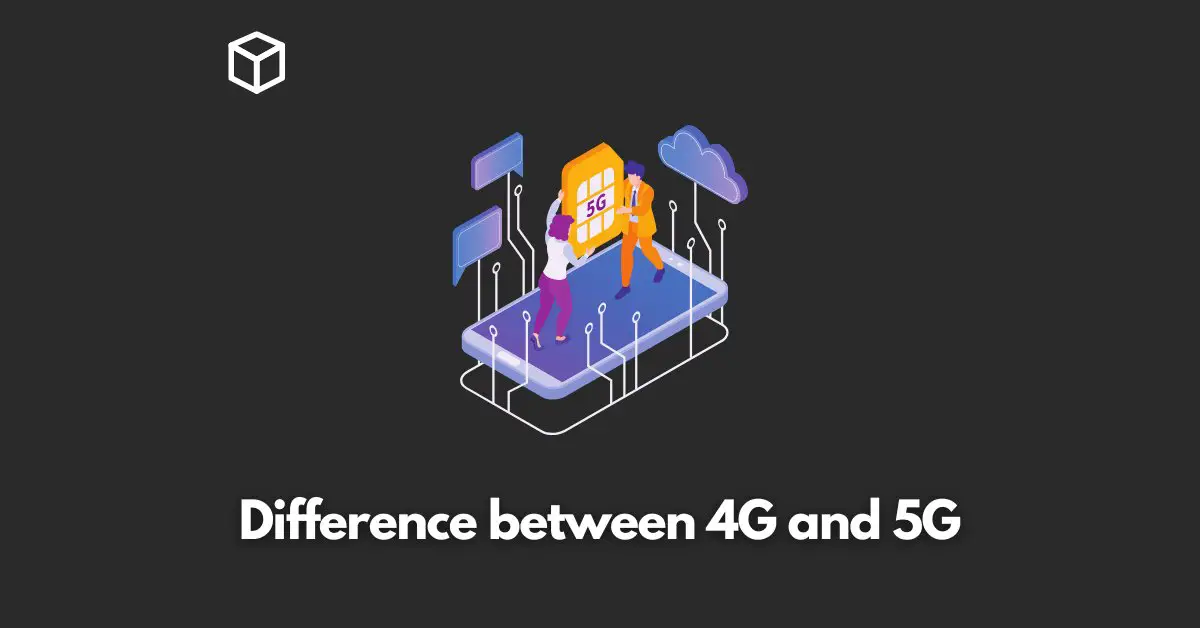The world of mobile technology is constantly evolving, and the latest development is the introduction of 5G networks.
With 5G, we will see a significant improvement in data transfer rates, which will open new possibilities for devices and applications.
In this article, we will explore the differences between 4G and 5G networks, and how 5G will change the way we use our devices.
What is 4G?
4G, or fourth generation mobile networks, were first introduced in 2008.
The main goal of 4G was to improve data transfer rates, and it was a significant step up from the 3G networks that preceded it.
4G networks allow for maximum data transfer rates of around 100Mbps, which is fast enough for streaming high-definition video, online gaming, and other data-intensive activities.
Many smartphones and tablets today are 4G-enabled, and they can take advantage of these faster speeds.
However, as technology progressed and more data-intensive applications like streaming 4k videos, virtual reality, and IoT devices came into existence, 4G networks started to show their limitations.
The need for faster and more reliable networks became more and more apparent. This is where 5G comes into the picture.
What is 5G?
5G, or fifth generation mobile networks, promise even faster data transfer rates.
5G networks are expected to offer maximum data transfer rates of up to 10 Gbps, which is 100 times faster than 4G.
With these faster speeds, 5G networks will make it possible for more devices to be connected to the internet at the same time, and for more data-intensive applications to be used.
For example, 5G networks will enable virtual and augmented reality to be used in new ways, and will make it possible for more IoT devices to be connected to the internet.
5G networks will also have a lower latency, which means the time it takes for data to travel from one device to another will be shorter.
This is crucial for applications that require real-time communication like autonomous vehicles and remote surgery.
5G networks will also use a different frequency than 4G networks. 4G networks mostly use frequencies below 6GHz, while 5G networks will use frequencies between 24GHz and 86GHz.
These higher frequencies are known as millimeter waves (mmWave) and they allow for faster data transfer rates but have a shorter range.
Differences between 4G and 5G
When it comes to data transfer rates, there is a significant difference between 4G and 5G networks.
4G networks offer maximum data transfer rates of around 100Mbps, while 5G networks will offer maximum data transfer rates of up to 10 Gbps.
This means 5G networks will be able to handle more data and will be able to support more devices at the same time.
Another major difference between 4G and 5G networks is the frequency they use.
4G networks mostly use frequencies below 6GHz, while 5G networks will use frequencies between 24GHz and 86GHz.
These higher frequencies are known as millimeter waves (mmWave) and they allow for faster data transfer rates but have a shorter range.
5G networks also have a lower latency than 4G networks, which means the time it takes for data to travel from one device to another will be shorter.
This is crucial for applications that require real-time communication like autonomous vehicles and remote surgery.
Potential Uses and Benefits of 5G
With the introduction of 5G networks, we will see new possibilities for devices and applications that were not possible before. Some of the potential uses and benefits of 5G include:
- Virtual and Augmented Reality: With faster data transfer rates and lower latency, 5G networks will enable virtual and augmented reality experiences to be more immersive and realistic. This could have a wide range of applications, from gaming and entertainment to education and training.
- IoT: Internet of Things (IoT) devices such as smart homes, connected cars, and industrial automation systems will benefit greatly from 5G networks. With faster speeds and lower latency, more devices will be able to connect to the internet, and the data they generate can be processed in real-time.
- Autonomous vehicles: 5G networks will enable real-time communication between vehicles, and between vehicles and infrastructure. This will make it possible for autonomous vehicles to make decisions faster, and will make the roads safer for all users.
- Remote surgery: 5G networks will enable doctors to perform surgeries remotely, using robotic arms. This will make it possible for doctors to treat patients in remote or underserved areas, and will make healthcare more accessible to everyone.
Challenges and Limitations of 5G
While 5G networks have the potential to bring many benefits, there are also some challenges and limitations that need to be addressed. Some of the main challenges include:
- Coverage: 5G networks will use higher frequencies than 4G networks, and these frequencies have a shorter range. This means that more base stations will be needed to provide coverage, and it will be more difficult to provide coverage in rural or remote areas.
- Interference: 5G networks will use frequencies that are already in use by other devices, such as radar and satellite systems. This could cause interference and will need to be carefully managed.
- Security: As more devices are connected to the internet, the risk of cyber attacks will increase. Strong security measures will be needed to protect the devices and the data they generate.
Conclusion
5G networks are the next step in mobile technology, and they promise to bring many benefits to users.
With faster data transfer rates and lower latency, 5G networks will enable new applications and devices that were not possible before.
However, there are also some challenges and limitations that need to be addressed, such as coverage and security.
The future of mobile technology is exciting, and we can expect to see many new developments in the field in the coming years.
As always, it’s important to stay informed and to be aware of the latest developments in order to take advantage of the new possibilities that 5G networks offer.




